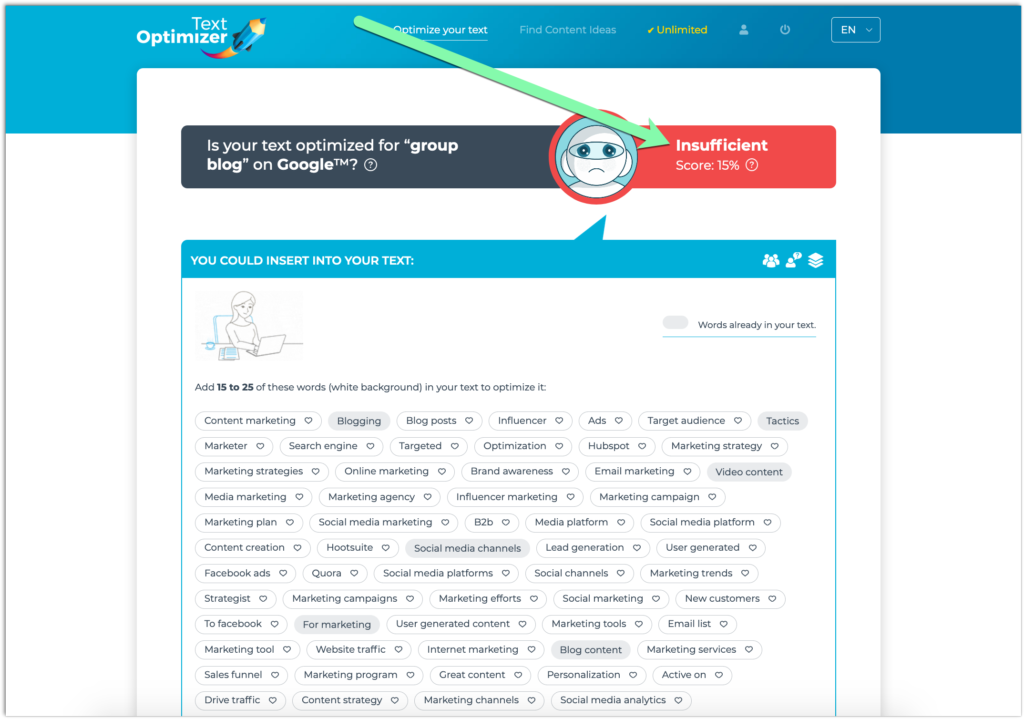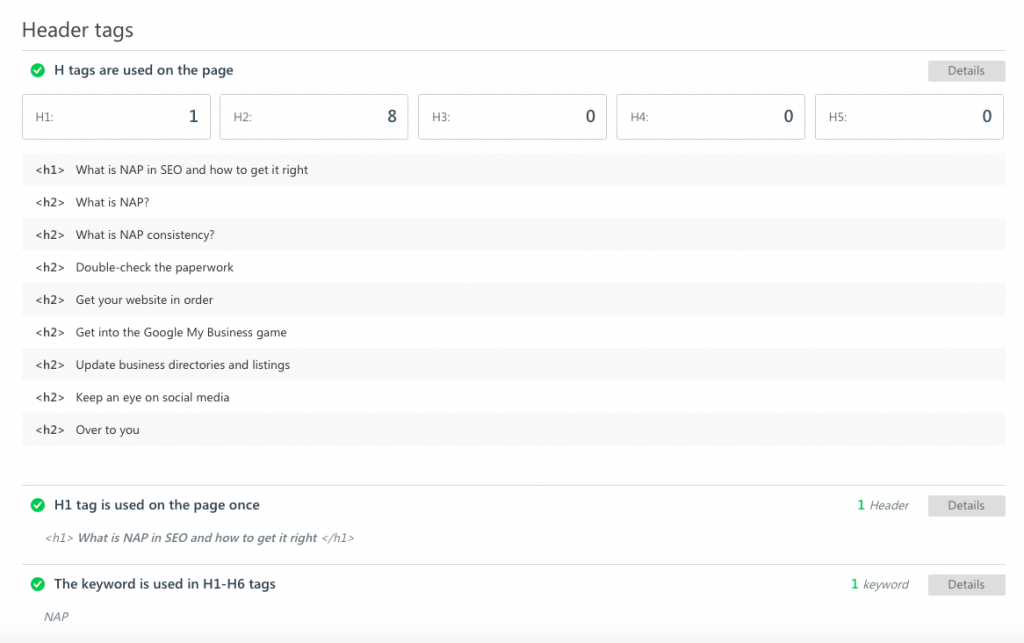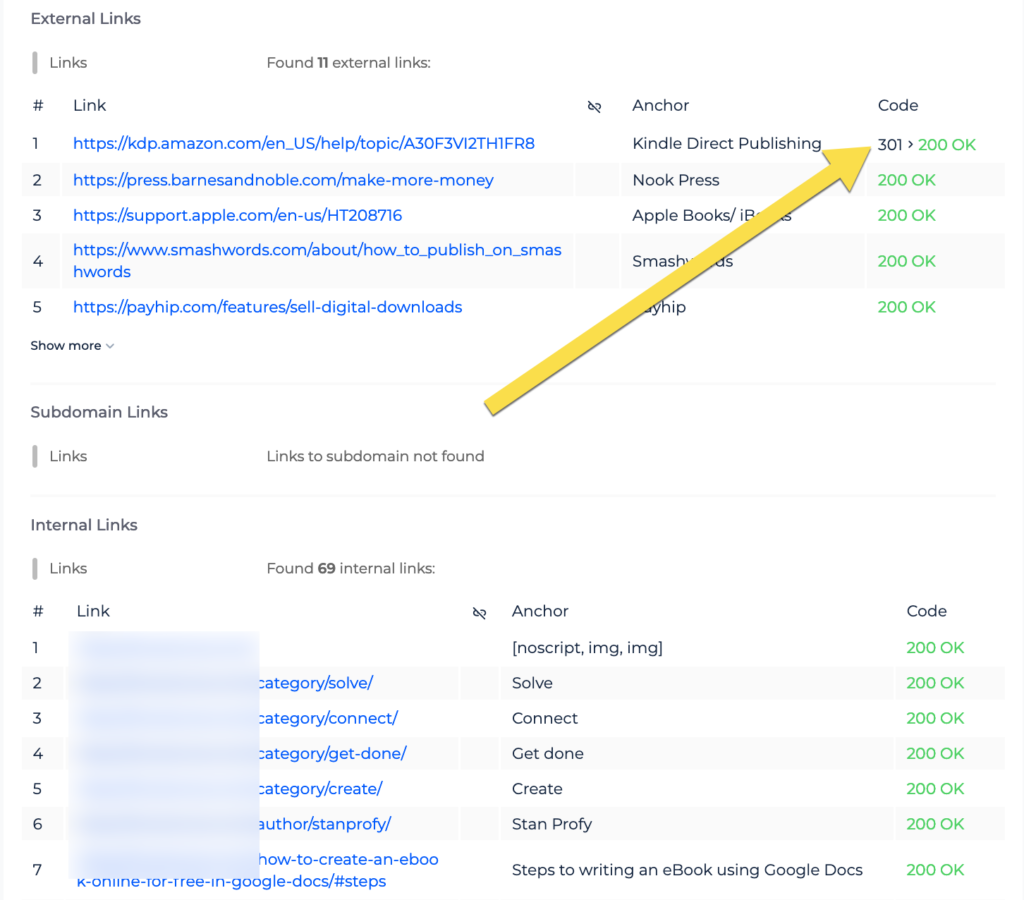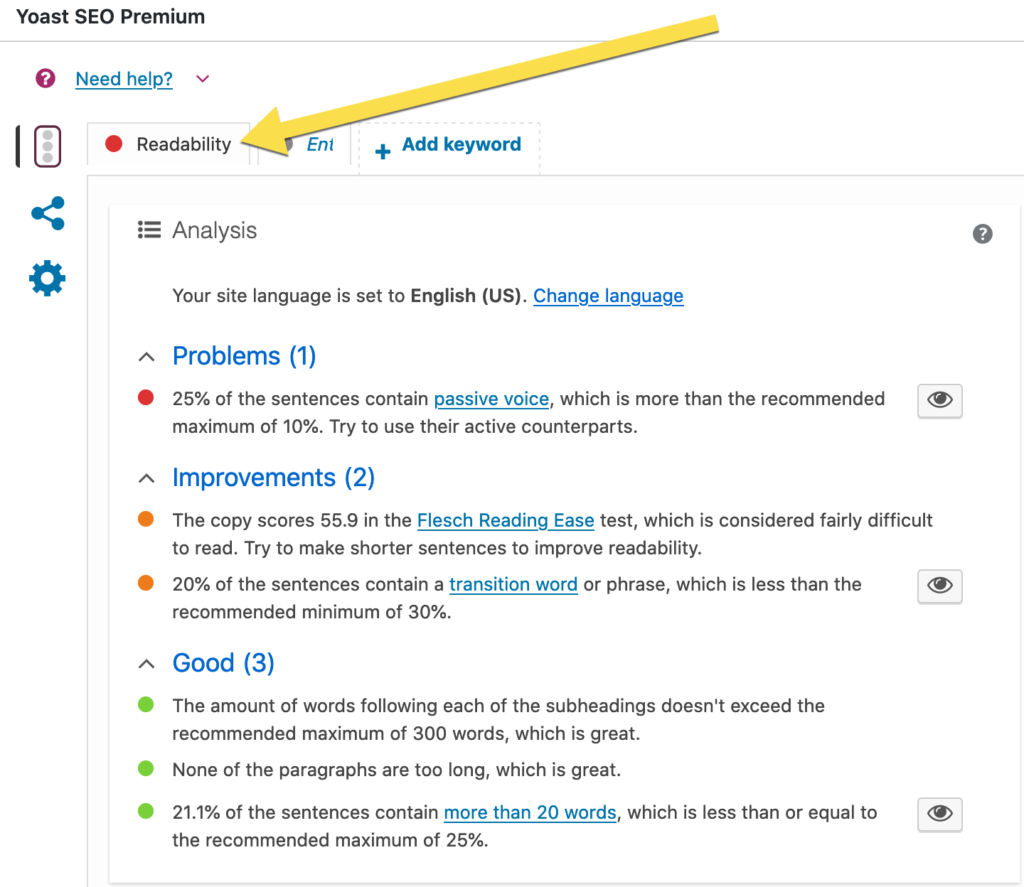30-second summary:
- Content quality is key to high rankings in Google organic but it is not easy to tell what a search crawler may deem high quality.
- High-quality content is most surely one that is semantically relevant to a target query and covers the given topic deep enough to satisfy a search user, hence semantic relevancy is probably the most powerful SEO signal.
- Content structure helps Google and its users to quickly grasp the main points covered on the page. So topical and logical subheadings may be a sign of a good copy.
- Readability and accessibility may not be direct ranking signals but they may improve on-page engagement which may send some quality signals to Google.
- Relevant outbound links that add to the depth of the content may (or may not) be direct ranking signals but they definitely add to the on-page user experience (and hence may influence what Google thinks of your page).
Google’s mantra has always been “create great content”. However while 15 years ago creating great content may have been not really that helpful, we are finally at the point when this recommendation has started paying off. In truth, nowadays high-quality content is key to higher rankings. But what is great content? In other words, how to tell a good copy from a mediocre one?
Answering this question is actually harder than it seems. A human being can somehow tell whether any text reads well and provides value but how can this be evaluated from an SEO standpoint, when a machine gets to decide on this pretty subjective criteria.
Well, we don’t know for sure. We can only make (educated) guess based on what Google reps say, various experiments, personal experiences as well as what we seem to know about search algorithms.
What constitutes a good copy?
While it may be easy for a human being to tell a good copy from a poor one, what may be pulling the trigger when it comes to search engines?
Here a few calculable criteria that may directly or indirectly define content quality:
- Semantic relevancy (Is the copy relevant to a target search query? Is the copy in-depth/comprehensive enough?)
- Well-defined content structure (Are there subheadings that reflect key points?)
- Accessibility (Can the content be easily understood by a person with some kind of disability?)
- Readability (How easy is it to read your content?)
Semantic relevancy
What is content relevancy? There’s no good answer to that as this too may be quite subjective.
That’s why Google has been utilizing semantic analysis to create its own understanding of what relevant topics are and how to tell whether a certain document is relevant to a certain search query.
I have already shared a guide on semantic search and what semantic analysis really is. In essence, semantic analysis involves clustering any topic into related concepts and entities and researching relations among all those concepts and entities.
Based on the document semantics, you can more or less tell how close it is to any topic and how comprehensively it answers a search query. There are tools that translate relevancy into numbers as well.
Text Optimizer, for example, takes your copy and compares it to Google’s search results for your target search query. The higher it scores your copy, the more relevant it is to your target topic:
 Source: Text Optimizer
Source: Text Optimizer
To score higher in Text Optimizer, select and cover more related concepts the tool suggests using. Here’s a quick and easy explanation on how it works.
Content structure
For years, content structure has been considered the second most important on-page SEO factor (after the page title).
Content structure is how you are using H2 / H3 / H4 subheadings to introduce new sections of the copy. Without subheadings, your copy would be a mere wall of text.
Google is using subheadings to understand key points of any copy (and often uses them to generate organic sitelinks). It has long been believed that Google is using subheadings to figure out which keywords within a web document are more important than the others.
These days we know that Google is paying lots of attention to subheadings because it’s now using H2 / H3 tags to locate parts of the documents that deserve to be featured.
You can analyze your (or your competitor’s) usage of content subheadings by using SE Ranking. It offers a handy page audit tool that lets you see your H-subheadings at a glance. You can also click any tag to see it highlighted:
 Source: SE Ranking
Source: SE Ranking
Traditionally, you want those extracted subheadings to make sense without seeing the full copy.
Many web users tend to scan through those subheadings before deciding whether they want to stay on the page and read thoroughly. So you want those subheadings to do a good job keeping all those lurkers engaged. Here’s more on creating an effective content structure with subheadings.
Outbound links (References)
Outbound links have long been the center of many SEO misunderstandings.
Do they directly contribute to your web page ranking? Can they be a signal of content depth or quality?
I guess we will never know for sure but what we do know about links is that:
- Google is using them to go from page to page, from site to site
- Links are part of your content quality: Whether you are using a trusted source to back up your copy determines how trustworthy your content is
- Links are your in-content calls-to-action: You are defining your readers’ browsing journeys by inviting them to check your external references.
You want your in-content links to contribute to the usefulness of your copy.
Site Checker does a good job analyzing outbound links within any page. The reason why I prefer this tool is that it shows the anchor text (as well as highlighting possible errors) giving you an idea of whether you are doing a good job controlling your readers’ browsing journey.
 Source: SiteChecker
Source: SiteChecker
Like with subheadings, the best practice is to make sure that you can guess what your copy is about by just looking through its links.
Also, don’t bother nofollowing those outbound links either. Only link to those resources that provide helpful further reading. This way your readers’ experience will be meaningful and Google will catch up on that.
Readability
Google doesn’t seem to use readability as a direct ranking factor but a readability score may help them determine a certain audience type you are using.
Besides, high readability levels will make your content hard to understand for people with various cognitive disabilities, so this may be another indirect signal to Google that your content is good for a limited audience.
Both of these signals may be negative ranking criteria of some sort.
To be on the safe side, avoid high readability scores. Apart from better accessibility, this will also make your content easier and quicker to understand (and hence improve on-page engagement which is surely a ranking signal):
- Make sure your sentences and paragraphs are short
- Avoid lesser-known (and complicated) terms and jargon
- Use active voice instead of passive voice where possible
- Create a lot of lists
- Again, use subheadings
Yoast plugin will score the readability of your copy as you are still working on it. Here’s how to install and set it up.

Content accessibility
Again, most of the above (content structure, links, and readability) contribute to the accessibility of your content. Google representatives offer no confirmation as to whether Google is using accessibility or ADA compliance as a ranking factor. Yet, we know that Google has been desperately trying to introduce and standardize accessibility guidelines of the web resources that show up in Google SERPs.
As we know from years of working on Google’s SEO, Google’s various efforts to force anything usually reflect in its webmaster guidelines. That’s what happened to site speed that started as a mild initiative, that’s what is happening to the mobile user experience signals that are now being included in Google’s guidelines.
Whether it is a direct ranking factor or not, web accessibility is an important on-page engagement factor allowing more users to properly interact with your content. It’s also a huge topic, so go ahead and read this whole ADA compliance guide to understand the concept (and the legislation behind it) better.
Conclusion
Obviously, there’s more to content quality audit than running the tools above but it is helpful to know some of the metrics that can be improved.
The post How to analyze on-page copy quality appeared first on Search Engine Watch.
This marketing news is not the copyright of Scott.Services – please click here to see the original source of this article. Author: Ann Smarty
For more SEO, PPC, internet marketing news please check out https://news.scott.services
Why not check out our SEO, PPC marketing services at https://www.scott.services
We’re also on:
https://www.facebook.com/scottdotservices/
https://twitter.com/scottdsmith
https://plus.google.com/112865305341039147737
The post How to analyze on-page copy quality appeared first on Scott.Services Online Marketing News.
source https://news.scott.services/how-to-analyze-on-page-copy-quality/
No comments:
Post a Comment